A closer look at Portsmouth's amazing monuments
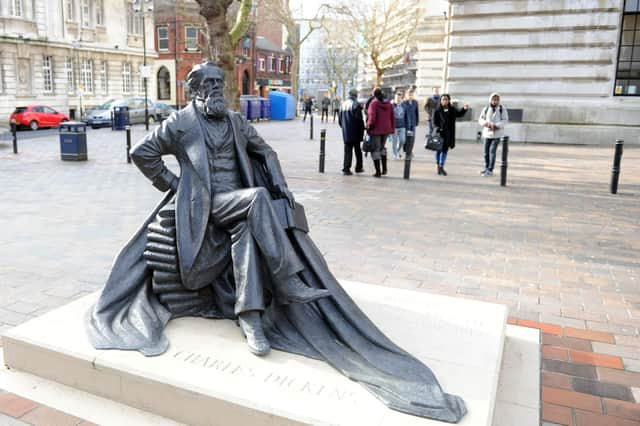

The Portsmouth-born writer felt his great works of literature – from Oliver Twist to A Christmas Carol – would be enough of a legacy.
In fact he explicitly told his heirs not to make him the subject of ‘any monument, memorial or testimonial whatsoever’.
Advertisement
Hide AdAdvertisement
Hide AdDespite his wishes, Dickens was cast in bronze and is in good company. There are memorials to Admiral Lord Nelson, Queen Victoria, Captain Scott and Field Marshal Montgomery, dotted around the city.
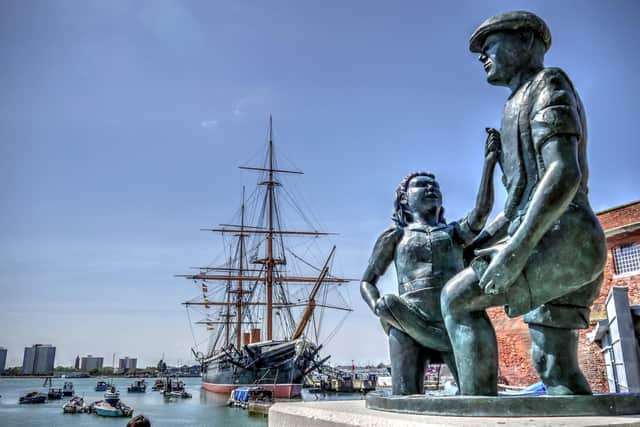

As well as the 70 council-owned monuments, there are fantastic statues and memorials in the Historic Dockyard, and many war memorials maintained by the Commonwealth War Graves Commission.
The £80,000 statue of Dickens leaning back on a pile of his books is one of the most recent, having been unveiled in February 2014.
David Evans, from Portsmouth City Council, is the man responsible for looking after them.
Advertisement
Hide AdAdvertisement
Hide AdHe says: ‘Portsmouth was such an important part of the life of Dickens that we felt we should recognise that in the civic centre.
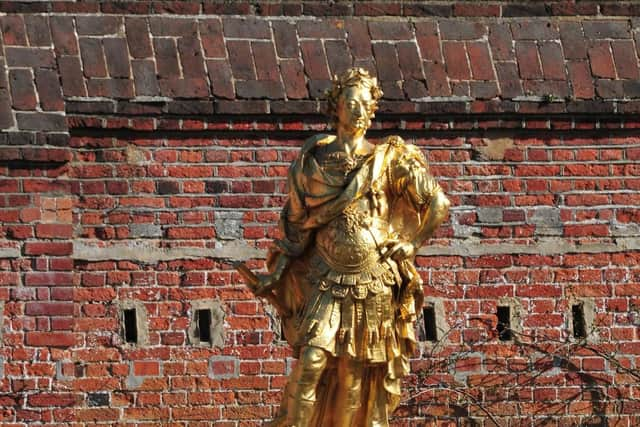

‘During graduation week we see lots of students and their families having photographs taken with him.’
One of the oldest monuments in the city is the milestone on London Road, Widley, which is from the mid-1800s.
It is a very small marker but still important.
Many of the much older monuments have disappeared.
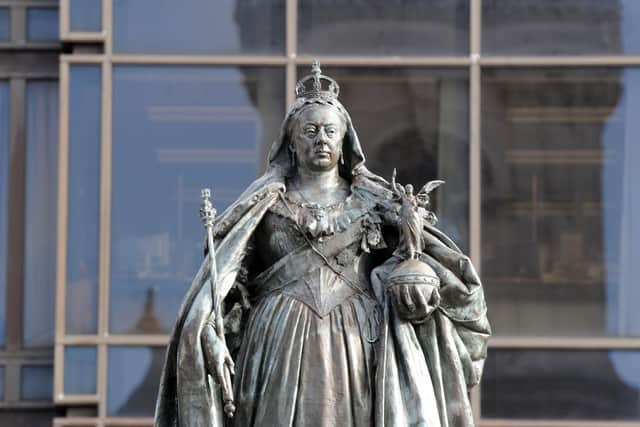

David explains: ‘The old monuments tended to be very prominently placed around the city and were sadly destroyed during the bombing of the Second World War.
Advertisement
Hide AdAdvertisement
Hide Ad‘One or two of them were stolen – not in the 21st century – more than 100 years ago.
‘There are others that we have no idea where they went.
‘They were likely commissioned by private individuals or shipping companies and then forgotten about.
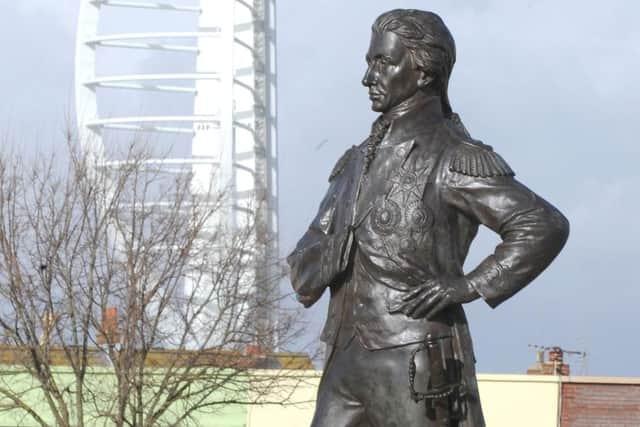

‘If they were not looked after and had become unsafe they would have been removed.’
Each year David carries out a condition survey of all the monuments under his remit, during which he inspects and photographs each one.
Advertisement
Hide AdAdvertisement
Hide AdLord Nelson, in Grand Parade, Old Portsmouth, has recently had a few problems with his sword, and that has been restored.
There is a small budget for restoration but any major work must go before council members for capital funding – which David says is never refused.
‘Whatever the members’ political persuasion, they know how important the monuments are to the city’, he adds.
Statues such as Queen Victoria’s in Guildhall Square, are so precious they need care and attention from specialists.
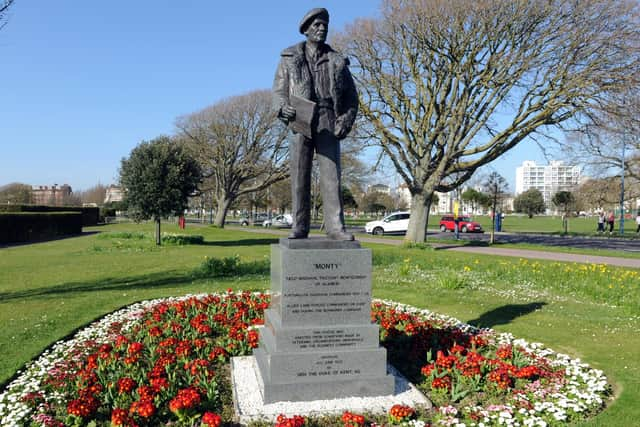

Advertisement
Hide AdAdvertisement
Hide AdShe was briefly put into storage on Portsdown Hill in the 1970s when the Civic Offices were built, but has been in her imposing position looking over the square ever since.
‘We have to take great care of her’, says David. ‘She is only worked on every couple of years and it takes about two days.
‘We have to be so careful not to take off the patination – but the bird droppings have to go.’
A mile down the road at Portsmouth Historic Dockyard there are many more statues and monuments, looked after by Portsmouth Naval Base Property Trust.
Advertisement
Hide AdAdvertisement
Hide AdAmong them is a golden statue of William of Orange, affectionately known by staff at the dockyard as the Old Roman Geezer.
Many film fans will have spotted him in the Porter’s Garden, on their way to No 6 Cinema at Boathouse Number 6.
He was presented to the dockyard by King William III in gratitude for the navy’s tacit support for his cause.
The statue, finished in the manner of the Caesar , was presented to the dockyard in 1718.
Advertisement
Hide AdAdvertisement
Hide AdJust a few feet away, at the western end of the Porter’s Garden, stands Captain Robert Falcon Scott.
Sculpted by his widow, Lady Kathleen in 1915, the Grade II listed bronze statue of Cpt Scott looks out across the harbour with one of his faithful dogs by his side.
The statue came to Portsmouth following its commission by the then Commanding Officer of HMS Vernon as a tribute to the great explorer with all the ship’s officers helping to fund the project.
Just in front of HMS Victory, in Victory Arena, stands the muscular figure of the Field Gunner.
Advertisement
Hide AdAdvertisement
Hide AdIn 2006 after fundraising and donations from members of the Field Gun Association, the £30,000 needed to purchase a bronze statue of a field gunner carrying a wheel on his shoulder was completed.
Over in Broad Street, Old Portsmouth, the Bond of Friendship commemorates the sailing, from Spithead in May 1787, of the first fleet taking settlers to Australia. There is an, almost, identical one in Circular Quay, Sydney Cove, Australia. The Old Portsmouth monument was unveiled by the Queen in 1980 and is maintained by the council. David says: ‘Ours is made of gun metal, the one in Sydney, Australia, is shiny gold.
‘They represent going from the old to the new.’
‘It is a privilege to look after the monuments’, he adds.
‘My main role is leisure and sports facilities so it's a bit different.
‘We are very lucky to have so many monuments.
‘This is not a city of memorials, it is a city that remembers its past.
Advertisement
Hide AdAdvertisement
Hide Ad‘It’s important because it makes us think about the future.’
Poignant reminders of Portsmouth’s past
Many of the statues and monuments around the city were paid for by the public or private individuals.
One of the most recent is the Mudlarks statue on The Hard, pictured above.
It features a teenage lad in rolled up trousers, shirt, braces and flat cap with a collecting tin as a little girl kneels in mud holding up a penny.
Advertisement
Hide AdAdvertisement
Hide AdThe project, which was completed in 2010, was partly funded by the profits of a book by former Portsmouth councillor Margaret Foster.
Mudlarkers: Memories of Earning a Few Bob In Portsea, is a collection of true stories told by people from the area, including Margaret, who was a mudlark in the 1950s.
Plans have been unveiled for a spectacular £250,000 bronze monument to celebrate the heritage of HMS Vernon and those involved in mine warfare, diving and bomb and mine disposal is to be unveiled at Gunwharf Quays in March 2020.